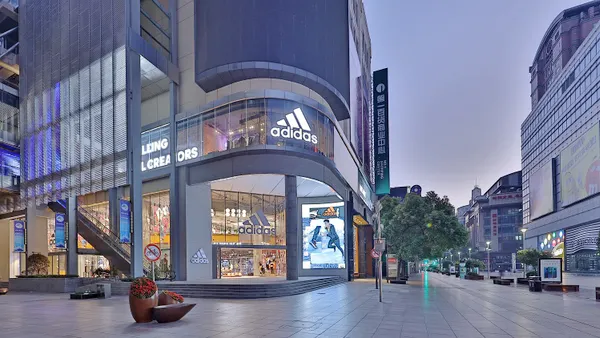Dive Brief:
-
Target is seeing a sales boost from merchandise-display upgrades in its stores, such as mannequins in the clothing department and lifestyle vignettes in its home department, Brian Cornell, CEO, said during Women’s Wear Daily’s Apparel and Retail CEO Summit in New York on Tuesday, Fortune reported.
-
Sales of items worn by mannequins, now in 1,400 of Target’s nearly 1,800 stores, have risen 30%, he said.
-
Home products shown in vignettes are outperforming in the revamped home departments, which will roll out to 262 Target stores.
Dive Insight:
These changes reflect the leadership of Cornell, now 15 months into his tenure as CEO. Cornell has made renewing the ‘Tarjay” style edge a top priority for the chain.
Target's highly successful Lilly Pulitzer collection this year put it back on the must-see fashion radar. (But success was a double-edged sword, as Target underestimated demand for the line, resulting in a backlash of unhappy shoppers.)
Cornell’s revival strategy has also led to revamped beauty and baby departments and a bigger investment in e-commerce, where the retailer has lagged competitors.
The changes have paid off, he said. “Traffic is back in our stores. We had three quarters in a row of positive comps. Our digital business is growing at twice the rate of the industry,” he said at the summit, reported Women’s Wear Daily.
Target will hire 1,400 visual merchandising experts by year-end to build on its enhanced apparel and home presentations, which take a page from the department/specialty store playbook.
In the clothing aisle, mannequins offer shoppers ideas for coordinated fashion looks, while lifestyle vignettes help them dress their homes by room, not unlike an IKEA would.
While Target has long been known as the nation’s only mass-merchant couturier, with exclusive designer collections from the likes of Missoni to Isaac Mizrahi, there’s long been a disconnect between its merchandise and merchandising. Its trendier fare sits on shelves and hangs on racks, unceremoniously, similar to the presentation shoppers would find at Wal-Mart.
“We realized we were making [our shoppers] work too hard,” Cornell said, WWD reported. “We could deliver great print ads, amazing 30-second spots, but when you went to stores and started browsing or went to target.com, all you saw was a sea of racks or a string of search results. We owed our guests a better presentation.”













